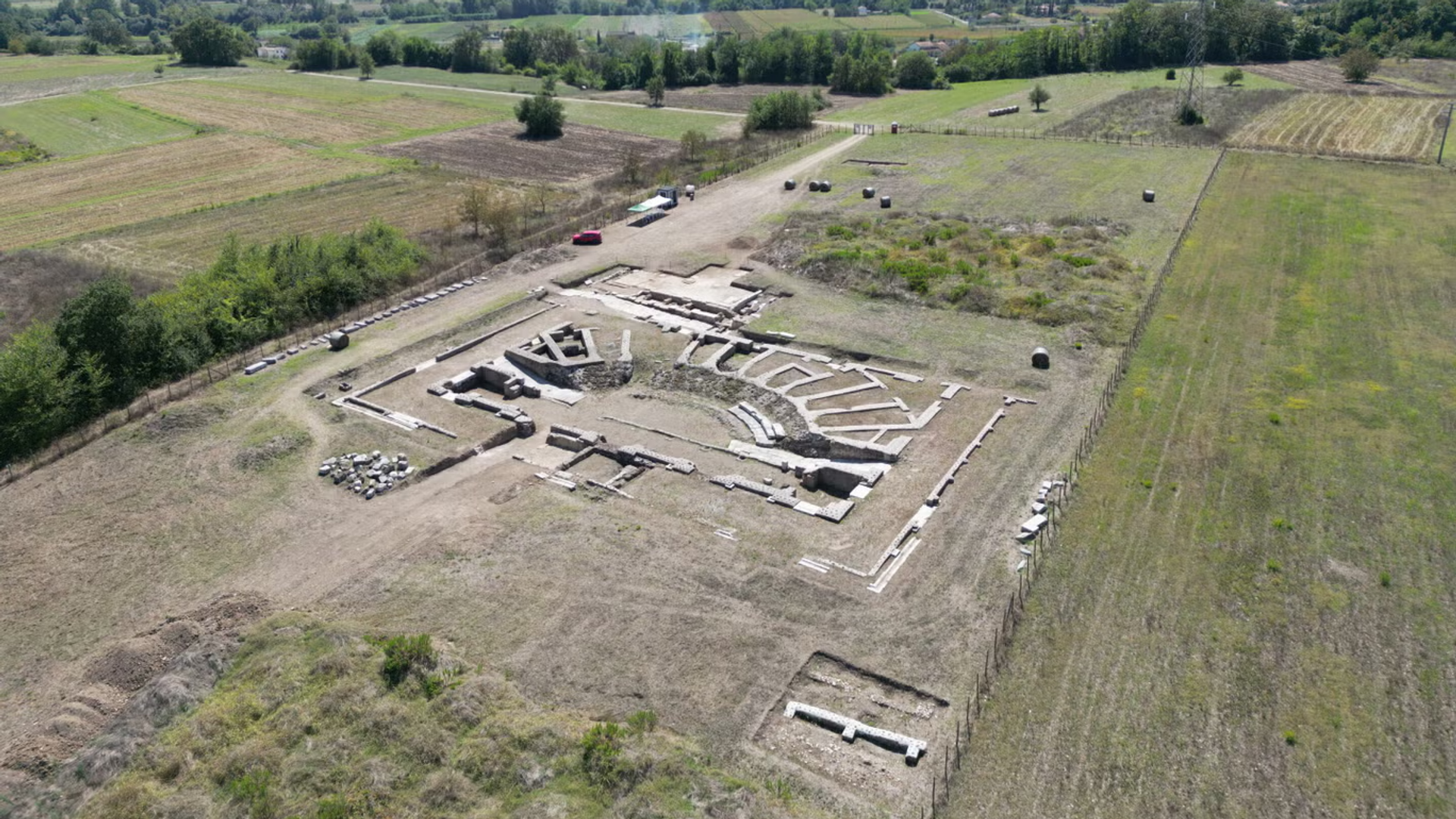https://sputnikglobe.com/20231213/revolutionary-discovery-in-italy-redefines-timeline-of-roman-empires-decline-1115563981.html
Revolutionary Discovery in Italy Redefines Timeline of Roman Empire's Decline
Revolutionary Discovery in Italy Redefines Timeline of Roman Empire's Decline
Sputnik International
Archaeologists have unveiled new findings from a decade-long excavation in Italy, fundamentally altering our understanding of the Roman Empire's decline.
2023-12-13T22:53+0000
2023-12-13T22:53+0000
2023-12-13T22:50+0000
beyond politics
science & tech
italy
history
https://cdn1.img.sputnikglobe.com/img/07e7/0c/0d/1115563823_0:251:1369:1021_1920x0_80_0_0_df57fb3183d634aa32de65c2317b8dbc.png
An archaeological team led by the University of Cambridge has unearthed shocking evidence that has the potential to rewrite the timeline of the Roman Empire's decline.The group's study focused on an Italian town in modern-day southern Lazio, then known as Interamna Lirenas, and which has led to the determination that the Roman Empire remained prosperous much longer than previously thought.The discovery emerged from a meticulous analysis of pottery fragments found at the site. Initially, the fragments suggested a town in decline by the 1st century AD; however, the new findings indicate Interamna Lirenas continued to thrive until the later part of the 3rd century AD, defying the general belief of the empire's deterioration.A deeper geological survey presented a stunningly detailed layout of the town, including public baths, a temple, a warehouse, and a theater. The features paint a picture of a resilient urban center, adapting to challenges over 900 years.The study was published in the Roman Urbanism in Italy publication.As researchers continue to investigate, the exact cause of Interamna Lirenas' eventual downfall remains a mystery, adding another layer of intrigue to this historical puzzle. This discovery not only sheds new light on the Roman Empire's history but also exemplifies the evolving nature of archaeological research, continuously reshaping human understanding of the past.
https://sputnikglobe.com/20200701/paris-archeological-exhibit-recreates-final-hours-of-roman-empires-pompeii-1079771362.html
italy
Sputnik International
feedback@sputniknews.com
+74956456601
MIA „Rossiya Segodnya“
2023
News
en_EN
Sputnik International
feedback@sputniknews.com
+74956456601
MIA „Rossiya Segodnya“
Sputnik International
feedback@sputniknews.com
+74956456601
MIA „Rossiya Segodnya“
roman empire, italy, the decline of the roman empire, roman urbanism in italy
roman empire, italy, the decline of the roman empire, roman urbanism in italy
Revolutionary Discovery in Italy Redefines Timeline of Roman Empire's Decline
The recent revelation comes from the University of Cambridge's extensive research in the southern Lazio region, challenging long-standing beliefs about the Roman era.
An archaeological team led by the University of Cambridge has unearthed shocking evidence that has the potential to rewrite the timeline of the Roman Empire's decline.
The group's study focused on an Italian town in modern-day southern Lazio, then known as Interamna Lirenas, and which has led to the determination that the Roman Empire remained prosperous much longer than previously thought.
The discovery emerged from a meticulous analysis of pottery fragments found at the site. Initially, the fragments suggested a town in decline by the 1st century AD; however, the new findings indicate Interamna Lirenas continued to thrive until the later part of the 3rd century AD, defying the general belief of the empire's deterioration.
"We think many other average Roman towns in Italy were just as resilient. It’s just that archaeologists have only recently begun to apply the right techniques and approaches to see this," Dr. Alessandro Launaro, a co-author of the study, said.
A deeper geological survey presented a stunningly detailed layout of the town, including public baths, a temple, a warehouse, and a theater. The features paint a picture of a resilient urban center, adapting to challenges over 900 years.
Previously, archaeologists based their conclusions on the distribution of pottery shards found in plough soil above the ruins. This method led to the belief that Interamna Lirenas peaked during the late 2nd to early 1st centuries BC and declined rapidly thereafter.
However, the recent comprehensive analysis of commonware pottery tells a different story, indicating a sustained urban vibrancy well into the 3rd century AD.
The study was published in the Roman Urbanism in Italy publication.
As researchers continue to investigate, the exact cause of Interamna Lirenas' eventual downfall remains a mystery, adding another layer of intrigue to this historical puzzle. This discovery not only sheds new light on the Roman Empire's history but also exemplifies the evolving nature of archaeological research, continuously reshaping human understanding of the past.



